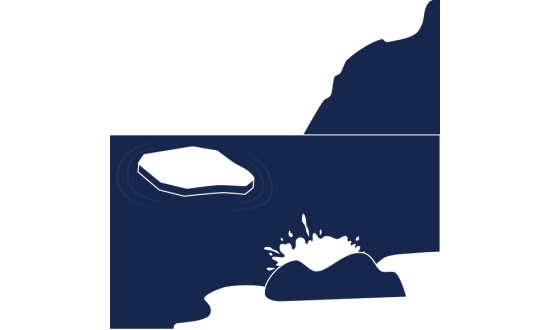
Harbor Seals
Size
Average lengths up to 6 feet, with weights ranging from 180 to 285 pounds

Diet
Mainly fish, shellfish, and crustaceans

Habitat
Temperate coastal habitats. Harbor Seals haul out on rocks, reefs, beaches, and drifting glacial ice when they are not foraging for food

Range
Northern coasts of North America, Europe, and Asia. U.S. East coast from the Canadian Arctic to the Mid-Atlantic. U.S. West coast from Baja California, Mexico to the Bering Sea.
Conservation Status
Least Concern
Near Threatened
Vulnerable
Endangered
Critical
Extinct in Wild
Extinct
Harbor seals can sleep underwater, coming up for air every 30 minutes.
Harbor seals typically do not stray far from an area that they know.
Harbor seals are from the ‘true seal’ family as they lack an external ear flap and have limited mobility with their flipper structure. Harbor seals are good swimmers, assisted by their streamlined shape, but are quite restricted on land. They are unable to support their body weight on their pectoral flippers and flop themselves on the ground to move about.
Although they spend most of their life in salt water, they will travel hundreds of miles upriver for food. Here at Mystic Aquarium, they thrive with regular feedings that can include up to 15 pounds of restaurant-quality fish and squid.
While many of the Aquarium’s harbor seals can be found in the Pacific Northwest habitat, it is not uncommon to see the likes of Coral, Bristol, and others in the Arctic Coast habitat as well.
Harbor Seal Quick Facts
Status
Protected by the Marine Mammal Protection Act
Threats
Human interaction injuries like entanglement, harassment, oil spills, pollution and habitat loss
Seals Up Close Encounter
Who doesn’t love harbor seals? Get to know more about these beloved creatures, hear their stories of survival, and learn about their natural history, animal care, enrichment training, adaptations, and current conservation issues.
